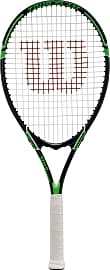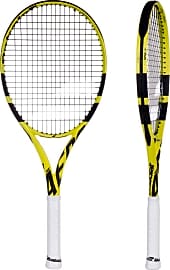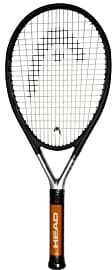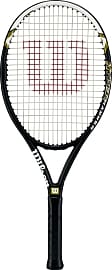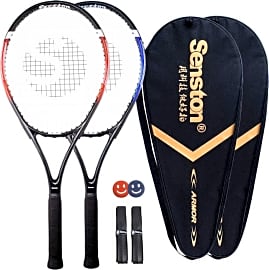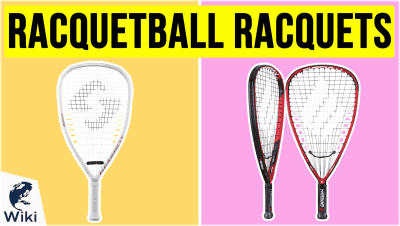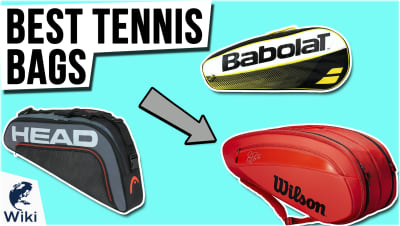The 10 Best Tennis Racquets

This wiki has been updated 41 times since it was first published in February of 2015. Playing great tennis isn't just about athleticism, although that certainly helps. It also depends on having gear that is comfortable to use and maximizes your talent, such as a racquet that matches your skill level and playing style. Our selections range from budget options to ones suitable for serious competitors, and are ranked by weight, durability, ball control, responsiveness, and power. When users buy our independently chosen editorial choices, we may earn commissions to help fund the Wiki.
Editor's Notes
March 16, 2021:
In this update, we replaced the 2018 model of the Babolat Pure Drive with the Babolat Pure Drive 2021, which has better feel and control while still delivering the power that the Pure Drive is known for.
The Yonex EZone DR and Prince Textreme Warrior were removed due to availability concerns.
Since the list already covered a number of top-tier racquets suitable for competitive use by experienced players, we decided to round the list out with some variety. To this end, we added the Head Speed Kids, a junior model that comes in a variety of different sizes that can accommodate children from 2 to 8 years old. Each size is a different color, so if you have multiple kids it will be easy to tell whose racquet is whose at a glance.
Also new to the list is the Senston Pro 500. This set comes with two racquets that are a good choice for beginners, with a comfortable grip and easy swing. They also come with carrying cases, vibration dampeners, and overgrips, so all you need to start playing is a court and a ball.
May 02, 2019:
The price gap between racquets used by beginners and those that advanced players wield is surprisingly small. For not too much money, you can buy a model that'll put you on par with the best of the best—as far as gear goes, that is. Still, there are important differences to take into account, which is to say that not every mid-range racquet is created equally. Some of our picks are intentionally elongated, with larger heads and specialized string patterns to accommodate the needs of beginners. Wilson designs and produces plenty of these,and the Hyper Hammer and the Tour Slam are among the best a new player can find. Wilson dominates at the opposite end of the spectrum too, with its Pro Staff reigning supreme for those of advanced skill. With that said, Babolat, Head, and Yonex offer competing options, all of which are of a high caliber and similar cost.
Special Honors
Yonex Vcore Pro 100 This graphite option is designed for those who like to play aggressively. It uses isometric technology to increase the racquet's sweet spot and provide more control without sacrificing power. A layer of vibration dampening mesh delivers more precision as well. yonex.com
Controlling Your Game
Regardless of whether the frame is made from wood, metal, or composite materials, it's more rigid than either the strings or the ball, so it has less elasticity.
The tools used to play a sport have not only evolved with time to support precision and improved ease of use, but their development almost always tells a story. The same can be said for the tennis racket. Not only does it tell a story, but the game of tennis defines physics at work.
A tennis racket consists of a handled frame with a wide open hoop across which a network of strings or catgut (animal intestine) is stretched. The racket's main parts include the head, rim, face, neck, butt, butt cap, and strings. With many modern-style rackets, some of the catgut has been replaced with synthetic fibers, such as nylon or other polymers for additional strength. Tennis rackets range in length from 21 to 29 inches, depending on the age and skill level of the intended player, with the longest rackets being used by professionals. The size of a racket's head is directly proportional to the level of power that is channeled into the ball when striking it during an intense match. The larger the head is, the more forgiving the margin of error becomes when striking the ball close to the racket's frame.
But wait. Don't I just need something to hit the ball over the net? In the simplest terms, yes. However, there's a great deal more to the story. Hitting the ball effectively with a good racket involves a three-component system between the ball, the frame of the racket, and its strings. The racket itself is not supposed to be completely stiff. In fact, all three of these components are flexible to some extent. This is purposeful so that the ball will transfer some of its kinetic energy to the racket frame and its strings, while the remaining energy is then used to send the ball back over to the other side of the tennis court.
The tension level of the strings is adjustable to give the player varying degrees of power. For example, as the string pattern becomes increasingly tight, the degree of precision upon impact with the ball also increases. This means that there is less deformation of the strings, making the angle and strength of impact with the ball more dependent upon arm movements and skill. By contrast, if the design of the strings is loose and open, deformation of the strings increases, meaning they have a direct impact on the power and spin of the ball. Low-tension strings still command skill as it takes time to learn where a racket's sweet spot is and how best to use it.
Regardless of whether the frame is made from wood, metal, or composite materials, it's more rigid than either the strings or the ball, so it has less elasticity. That said, some amount of kinetic energy is lost upon the frame's impact with the ball. For that reason, some feel that the stiffer the frame, the less energy that is wasted.
Rackets Of Choice
For the beginning tennis player, a large sweet spot and comfortable, non-slip grips are definitely important so that you get a feel for the game and the energy involved. Some rackets also offer gel-filled heads that evenly distribute impact load across their entire frames for improved control.
If you're sensitive to swing impacts, finding a racket with built-in vibration dampening/shock absorption capabilities can make playing the game more comfortable and less jarring.
Lightweight and sturdy materials (i.e graphite, titanium) are a given, since the last thing any player wants is a ridiculously heavy racket that's hard to hold or swing. What's most important is the ability to test your racket before purchasing it to ensure it is as comfortable and effective for your game as possible.
From Monks To Modern Times
The game of tennis has a long history that dates back to the 11th century when French monks used their own hands as rackets to play the first game. Things have progressed quite a great deal since then.
The first actual tennis racket was made from solid wood in 1874 in London by Major Walter C. Wingfield.
By 1975, the first oversized aluminum racket was made by Weed.
Many of the early rackets that followed into the 1940s were constructed from laminated wood (i.e. ash, maple, and okume) in order to improve upon solid wood's variability in strength.
By 1968, Wilson Sporting Goods developed the T2000 racket, which was made from steel. That same year, Spalding released the first aluminum racket called the Smasher. By 1975, the first oversized aluminum racket was made by Weed. Although aluminum was still less accurate than the early wooden models, this oversized racket paved the way for the development of more non-standard sized rackets for additional variety.
By the early 1980s, wood construction became obselete in favor of carbon fiber composites, thanks to companies like Dunlop and Prince. Composite construction has the advantage of being very lightweight and this is still the contemporary standard for today's tennis rackets. Today's focus is on racket customization, such as the Prince O3 racket that features large string holes for improved aerodynamics and speed.



